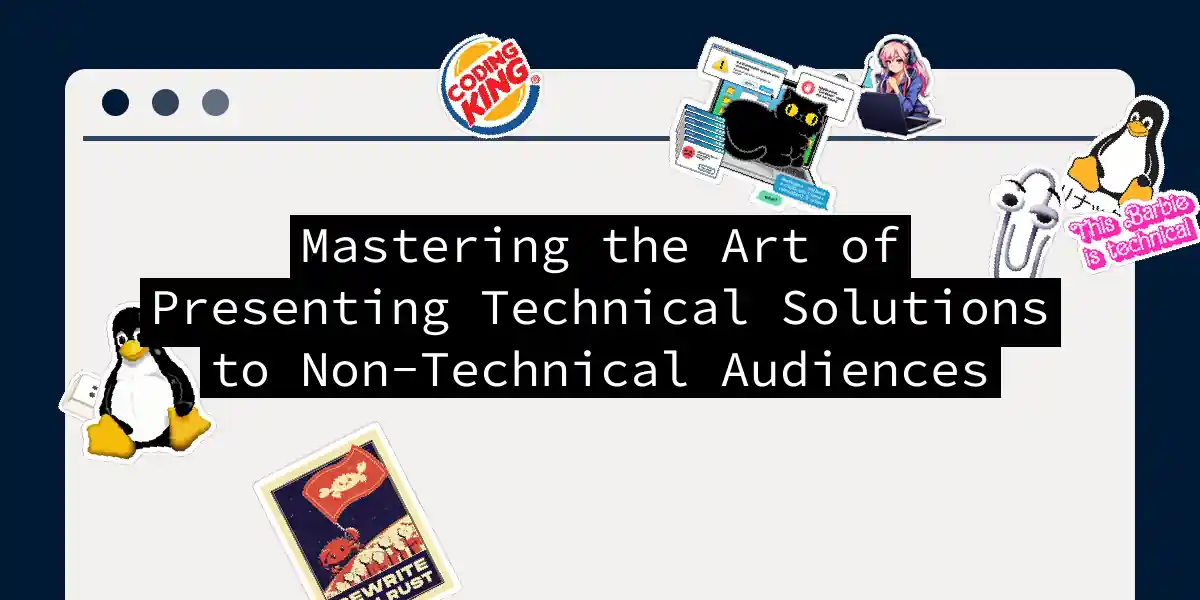Understanding Your Audience
When presenting technical solutions to non-technical audiences, the first and most crucial step is to understand who you’re talking to. It’s not about what you want to say, but about what they need to hear. This involves identifying their level of technical knowledge, their goals, and what they care about.
Imagine you’re a chef trying to explain a complex recipe to someone who has never cooked before. You wouldn’t start with the intricacies of sauce preparation or the chemistry behind baking. Instead, you’d focus on the end result: a delicious meal that they can enjoy. Similarly, when presenting technical solutions, start with the conclusions and recommendations, and then walk through the support and justification.
Simplify and Contextualize
Non-technical audiences rarely care about the exact methodology or technical details. They want to know how your solution will benefit them, save them time, or reduce costs. So, focus on what you did and why you did it, rather than how it was done.
For instance, if you’re explaining a machine learning model, you might say:
“Imagine you have a personal assistant that can predict your favorite coffee order based on your past purchases. This model works similarly, but instead of coffee, it predicts customer behavior to help us make better business decisions.”
This approach makes the technical concept more relatable and accessible.
Use Stories and Analogies
Stories are powerful tools for communication. They can engage your audience emotionally and make complex ideas more memorable. Use metaphors and analogies to explain technical concepts in a way that resonates with your audience.
Here’s an example:
“Think of our new software update like giving your phone a makeover. Just as a new phone case and screen protector make your phone look and feel better, our update improves the performance and security of our system.”
Visuals and Clarity
Visual aids are essential for presenting technical information to non-technical audiences. Use clear and concise charts, diagrams, and graphs to illustrate your points. Avoid clutter and focus on key messages.
Layered Content
Layering your content is a key strategy. Start at the highest level and then peel back the layers as you get deeper into the topic. This approach helps your audience follow along more easily and allows them to ask more informed questions.
Practice and Feedback
Practice your presentation in front of non-technical audiences to gauge their reaction. This will help you refine your message and ensure it resonates with your target audience.
Engage with Questions
Include questions throughout your presentation to keep your audience engaged. This could be as simple as asking, “So what?” or “What’s the big deal with that?” These questions help your audience connect with the information on a deeper level.
FAQs and Summaries
Finally, include frequently asked questions (FAQs) at the end of your presentation. This helps address any lingering doubts and provides a clear summary of the key points.
Conclusion
Presenting technical solutions to non-technical audiences is an art that requires empathy, clarity, and engagement. By understanding your audience, simplifying your message, using stories and visuals, and practicing your presentation, you can ensure that your message is heard and understood.
Remember, the goal is not to impress with technical jargon but to communicate effectively. As Albert Einstein once said, “If you can’t explain it simply, you don’t understand it well enough.” So, take the time to simplify, contextualize, and engage, and you’ll find that even the most complex technical solutions can be presented with ease and clarity.
